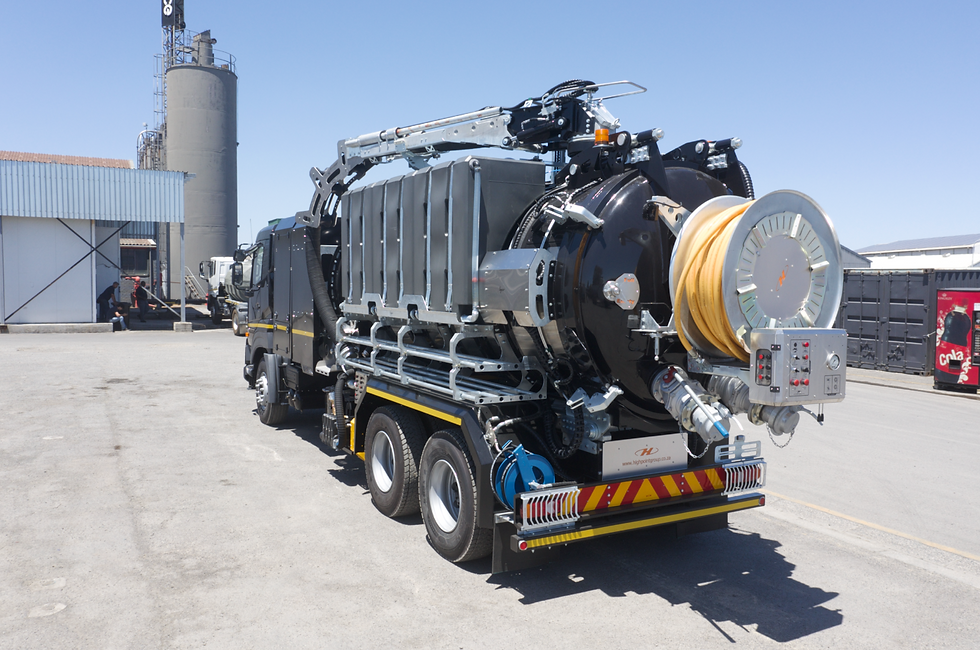Innovative Trenchless Solutions for Sustainable Infrastructure
- Camjet Pty Ltd

- Jun 18
- 3 min read
Updated: Sep 26
Urban areas are expanding rapidly, sustainable infrastructure has never been more crucial. Cities are grappling with aging systems that often lead to costly maintenance and environmental damage. Innovative trenchless solutions have emerged as a valuable answer, allowing municipalities to upgrade their infrastructure with minimal disruption. This blog post explores trenchless technologies that promote sustainability, as well as their benefits, methods, and future potential.

Trenchless technology refers to a range of methods designed for the installation, maintenance, and rehabilitation of underground utilities without significant excavation. This approach minimizes surface disruption, safeguarding the integrity of roads, landscapes, and ecosystems.
Trenchless methods can be utilized for various applications, including water supply lines, sewage systems, electrical conduits, and gas pipelines. Research indicates that using trenchless techniques can reduce the environmental impact of construction by up to 80%, making them an attractive option for municipalities focused on sustainability.
Benefits of Trenchless Solutions
Utilizing trenchless solutions offers numerous advantages over traditional construction techniques. These benefits include:
Reduced Environmental Impact
Trenchless technology greatly minimizes land disruption. By avoiding large-scale excavation, it preserves existing vegetation and protects local wildlife. For instance, in urban and suburban areas, this can help maintain biodiversity, which is vital for local ecosystems.
Cost and Time Efficiency
Trenchless methods often result in lower project costs and faster completion times. According to industry studies, trenchless projects can save up to 30% on labor and materials compared to traditional methods due to less restoration work being required. With shorter project durations, there is less inconvenience for residents, resulting in fewer traffic delays.
Improved Safety
These technologies enhance safety for workers and the public. The decreased need for deep excavations reduces the risk of accidents and collapses. Furthermore, fewer heavy machinery operations lead to fewer injuries on-site, promoting a safer working environment.
Several trenched methods have proven to be highly effective in promoting sustainable infrastructure:
HDD is frequently used for installing underground utilities, especially in areas where traditional digging is impractical. This process involves drilling a pilot hole along a planned path and then enlarging it for utility installation. For example, HDD is particularly useful for crossing rivers and roads, allowing utilities to be installed with minimal surface impact.
This rehabilitation technique breaks apart old pipes while simultaneously installing new ones into the space created. A specific example is replacing aging sewer lines without extensive digging. In cities like Philadelphia, pipe bursting has rehabilitated thousands of linear feet of sewer lines, providing a more cost-effective solution than traditional excavation.
Microtunneling utilizes small tunnel boring machines to create precise tunnels for utility installation in congested areas. This method ensures minimal disturbance to the surface while achieving high accuracy. In Singapore, microtunneling has been used to install new sewer lines under busy roads and residential areas without disrupting daily life.
The Path Forward for Trenchless Technologies
As our urban spaces grow and environmental concerns heighten, trenchless technologies will play a pivotal role in future infrastructure development. Innovations such as real-time monitoring systems and advanced robotics will enhance the efficiency and effectiveness of where and how these technologies are applied.
As cities invest in modernizing infrastructure, trenchless methods are likely to rise to the forefront of sustainable practices. By adopting these cutting-edge technologies, municipalities can ensure their infrastructure meets current demands while preparing for future challenges.
Looking Ahead
Innovative trenchless solutions are transforming how we approach sustainable infrastructure. By reducing environmental impact, cutting costs, and enhancing safety, these technologies represent a significant shift in utility installation and rehabilitation practices.
As cities navigate the complexities of infrastructure management, trenchless technology offers a peek into a more sustainable, efficient, and non-intrusive future. With stakeholders increasingly embracing these solutions, communities can anticipate improved infrastructure that works in harmony with both people and the environment.
Related Services:
Camjet - Johannesburg
Camjet - Durban
Camjet - Cape Town




Comments